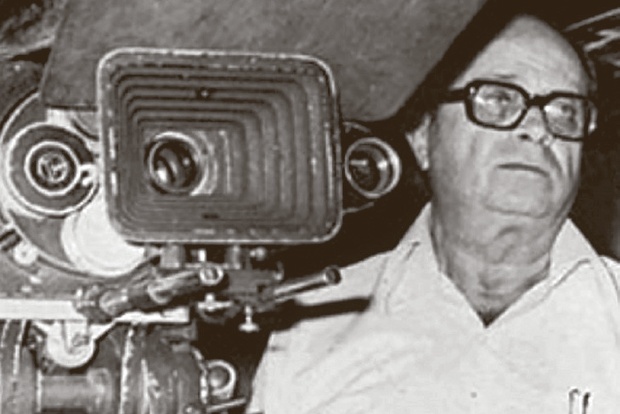Begin typing your search...
THOSE WERE THE DAYS: Marcus, cinematographer who gave special effects experts a run for money
In this series, we take a trip down memory lane, back to the Madras of the 1900s, as we unravel tales and secrets of the city through its most iconic personalities and episodes

Chennai
In spite of his high-sounding Roman name, a pallid complexion and blue eyes, Marcus Bartley was from an Anglo-Indian family of doctors based out of Yercaud. While his father, a military dentist, processed dental x-rays himself, young Marcus had to aid him.
As a logical extension, he negotiated a brownie camera from his father and got hooked to photography and printing. His father was stringent with film rolls — just one a month and demanded a return of at least eight good photos from them. While more than eight photos were coming out good, Marcus was failing more and more subjects in school.
He used the camera to shoot the countryside. With his next camera, he was published in The Illustrated Weekly and even abroad. Quitting school, he joined a magazine for a monthly salary of 70 rupees, thus becoming one of the earliest photojournalists in India. Soon, for British Movietone, as a newsreel cameraman, he covered the farewell of Lord Willingdon, travelling with him across north India. Covering a riot, he filmed a rioter being shot dead by an Asst. Commissioner of Police. While the police rushed to his office to confiscate the film, it was hastily put on a plane to the United Kingdom.
When a German boss asked him to shoot the Bombay harbour, he did it with great gusto and when the photos were not printed, Marcus had a horrible suspicion that he had been used for espionage and the photos had gone to the enemy. He quit the job and rushed to Madras.
Transition to talkies was happening in Madras cinema. It was director K Subramanyam who used him to shoot Emarndha Sonagiri, a hilarious short film for a fee of 50 rupees, but when he viewed the film Marcus found his own work atrocious.
Bartley did not have any formal training in photography and all his experience came from observation. He would be on the sets for days before the actual shoot, working on angles and lighting to make it a perfect shot.
Marcus had great regard for the script and the storytelling aspect. Right from the start, he decided the cinematography should be an integral part of the storytelling but should not be conspicuous enough to draw notice to itself. He would often say: “The minute someone in the audience whispers, ‘Oh, what a gorgeous frame’, the cameraman is a disappointment”.
One of the movie moguls of Madras, Nagi Reddy was building Vauhini Studios. He gave him the job of setting up the film laboratory and head the photography department. Having grown under the black and white era, he became a master in turning reality into black and white abstract images. As a youngster, Marcus would accompany his father on the jungle hunts and be forced to keep awake for the entire night. The moonlight and its effect on the elements of jungle imprinted itself on the young boy’s mind. When he was a cameraman, he became famous for moonlight effects and any film under the Vauhini banner had a mandatory romantic song in moonlight (it was called Vauhini moon scene by the industry).
In an era when trick shots depended on the photographer rather than the special effects department, Marcus found his forte. His trick shots in Pathala Bhairavi and Mayabazar are popular even today. The methods he used are still not decipherable by today’s experts. Deception shots in Mayabazar and the song Kalyana samayal saadham... are still famous, mainly amongst children.
Marcus was an expert using the most influential camera ever made — the Mitchell, which not only dominated movie production then but would influence cinema production for the rest of the century with technologies derived from it. (George Mitchell got an honorary Oscar for it.)
But Marcus was a disciplinarian. He demanded and got total silence to concentrate on his shots and once even asked a movie mogul to shut up on the sets. Vauhini soon dubbed him a troublemaker and fired him. He joined Gemini, where he shot odds and ends. Fortunately, at that time, Ramu Kariat, a leftist director, asked him on loan to shoot a Malayalam film Chemmeen (a novel by Thakazhi Sivasankara Pillai).
Shooting a fisherman theme, Marcus had a tremendous opportunity to show the varying moods of the ocean. The one thing that would have made the film an all-time winner was when he wanted to wait for the south-west monsoon to shoot the sea at the height of the monsoon (when waves touched 60 feet). Producers felt it was not a documentary and were actually afraid such shots would take the mind of the audience off the story. It was always Marcus’s greatest regret. Marcus left the project incomplete but still got the gold medal at the International film festival held at the Cannes. Many years later, Bartley finally received the National Film Award for Best Cinematography in 1970 for Shanti Nilayam, a loose remake of The Sound of Music.
In his retirement, he took to servicing camera lenses, and it was quite often that camera persons got a lashing from his sharp tongue for not maintaining the lenses as they should have done. The Tamil Nadu government gave him the lifetime achievement Raja Sandow award when he was deep into retirement.
— The author is a historian (With inputs from film historian Lakshmi Priya Pakanati)
Visit news.dtnext.in to explore our interactive epaper!
Download the DT Next app for more exciting features!
Click here for iOS
Click here for Android
Next Story



